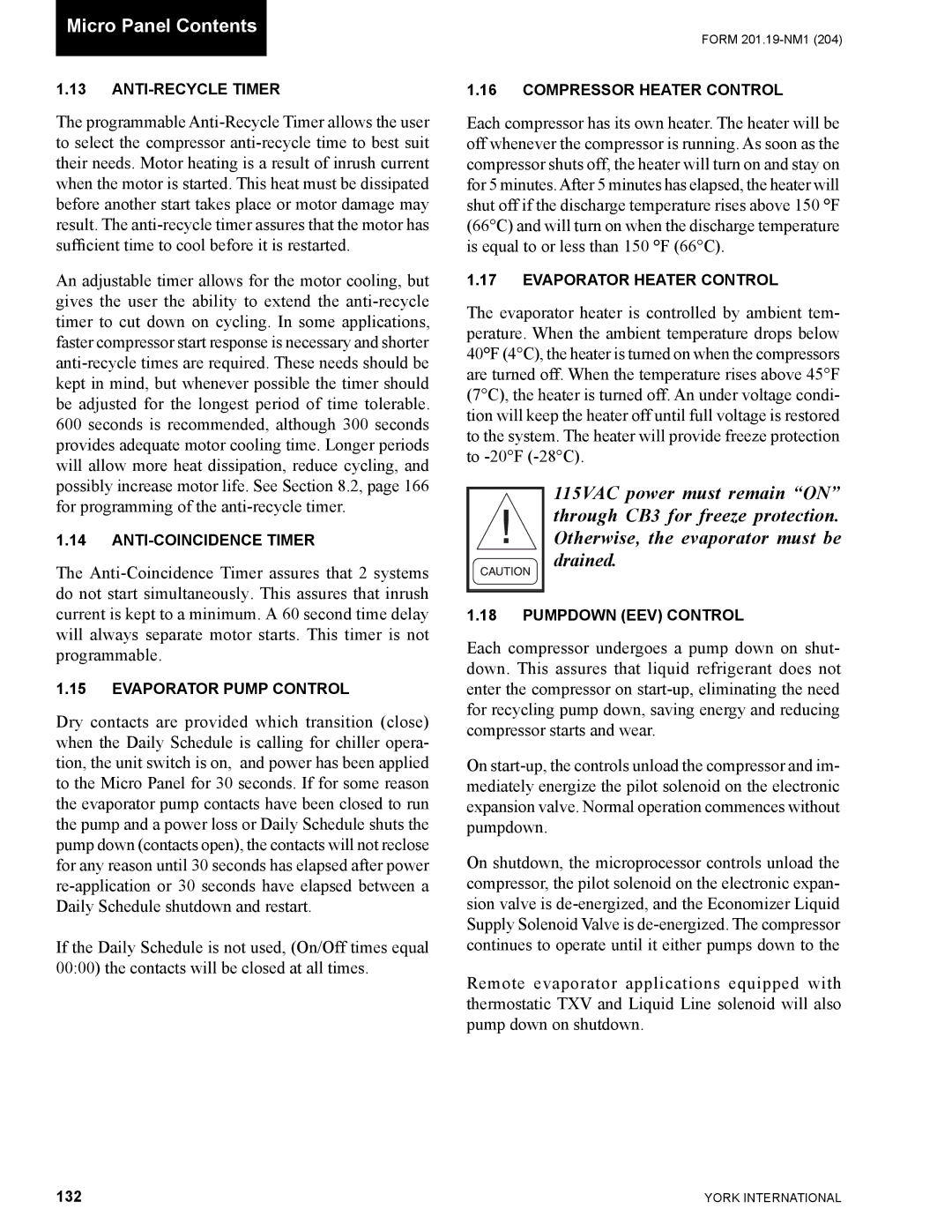
Micro Panel Contents
1.13
The programmable
An adjustable timer allows for the motor cooling, but gives the user the ability to extend the
1.14
The
1.15EVAPORATOR PUMP CONTROL
Dry contacts are provided which transition (close) when the Daily Schedule is calling for chiller opera- tion, the unit switch is on, and power has been applied to the Micro Panel for 30 seconds. If for some reason the evaporator pump contacts have been closed to run the pump and a power loss or Daily Schedule shuts the pump down (contacts open), the contacts will not reclose for any reason until 30 seconds has elapsed after power
If the Daily Schedule is not used, (On/Off times equal 00:00) the contacts will be closed at all times.
FORM
1.16COMPRESSOR HEATER CONTROL
Each compressor has its own heater. The heater will be off whenever the compressor is running. As soon as the compressor shuts off, the heater will turn on and stay on for 5 minutes. After 5 minutes has elapsed, the heater will shut off if the discharge temperature rises above 150 °F (66°C) and will turn on when the discharge temperature is equal to or less than 150 °F (66°C).
1.17EVAPORATOR HEATER CONTROL
The evaporator heater is controlled by ambient tem- perature. When the ambient temperature drops below 40°F (4°C), the heater is turned on when the compressors are turned off. When the temperature rises above 45°F (7°C), the heater is turned off. An under voltage condi- tion will keep the heater off until full voltage is restored to the system. The heater will provide freeze protection to
115VAC power must remain “ON” through CB3 for freeze protection. Otherwise, the evaporator must be drained.
1.18PUMPDOWN (EEV) CONTROL
Each compressor undergoes a pump down on shut- down. This assures that liquid refrigerant does not enter the compressor on
On
On shutdown, the microprocessor controls unload the compressor, the pilot solenoid on the electronic expan- sion valve is
Remote evaporator applications equipped with thermostatic TXV and Liquid Line solenoid will also pump down on shutdown.
132 | YORK INTERNATIONAL |
